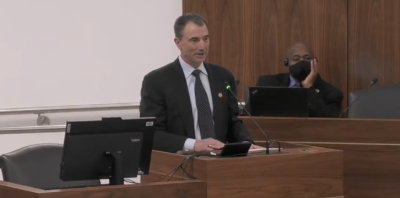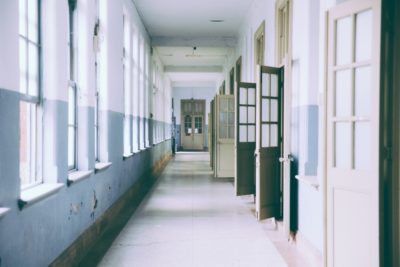

|
|
North Carolina will soon mark — but not celebrate — the second anniversary of the emergency order to shut down public schools in the face of the COVID-19 outbreak. As the March 14 date approaches, the state continues to grapple with the implications of lost instructional time, staff shortages, teacher morale, and inequities made more evident by the pandemic.
Based on data gathered from December 2021 to February 2022, the National Center for Education Statistics found that 44% of public schools nationwide reported having at least one teaching vacancy in January. More than 50% of teaching or staff vacancies were due to resignation.
“Of schools reporting at least one vacancy,” said NCES, “special education was identified as the teaching position with the most vacancies, with 45 percent of schools reporting this vacancy, followed by general elementary teaching positions (31 percent) and substitute teachers (20 percent). Resignation was reported as the leading cause of teacher vacancies (51 percent), followed by retirement (21 percent).”
In North Carolina, the State Board of Education received this week a report showing a relatively modest increase in teacher attrition during the first academic year in the pandemic. In 2020-21, said the report, 7,735 of the state’s 94,000 teachers left the profession — an 8.2% attrition rate, slightly higher than the 7.5% rate in 2019-20.
Uncertainty and worry remain about the fall-out from the second year as schools returned from online to in-classroom instruction. What’s more, North Carolina had unfinished pre-pandemic business in shoring up the recruitment and retention, the quality and diversity, of the teaching corps — and no measure may be more important than paying teachers as professionals.
Drawing data from the UNC System dashboard, Public Schools First NC, a Raleigh-based advocacy organization, points out that enrollment of students majoring in education dropped markedly from 2012 to 2021 in the state’s public universities, the largest source of new teachers. Bachelor’s enrollment fell from 12,434 to 7,901 and master’s from 5,918 to 5,411.
Especially noteworthy is the Public Schools First observation that North Carolina’s six public “minority-serving universities … whose early-career teachers are predominately racial/ethnic minorities, have been especially hard hit by enrollment declines. With the exception of NCCU (North Carolina Central University), the enrollment and number of programs dropped dramatically for all schools.”
Amber Northern, senior vice president at the Thomas B. Fordham Institute, a conservative education think-tank, recently took note of research at the University of Maryland that found that “compared to their White colleagues, teachers of color have large and lasting effects on the social-emotional, academic, and behavioral outcomes of their students.”
“Teachers of color,” she wrote, “are more likely than their White colleagues to view student intelligence as malleable versus fixed, to build interpersonal relationships with students and their families, to spend more time planning for instruction and differentiating pedagogical approaches to individual students’ needs, and to lead well-organized classrooms … Even more interesting, the effects of teachers of color on self-efficacy extend not just to students of color, but also to their White peers.”
North Carolina has, of course, taken steps to repair and enlarge its pipelines for recruiting and retaining high-quality teachers. Gov. Roy Cooper appointed a DRIVE task force to address the need for greater teacher diversity. The UNC and community college systems have a new articulation agreement under which community college students would transfer into university teacher-education programs. The General Assembly reconstituted a scaled-down Teaching Fellows program that it blithely de-funded in 2011.
Still, the Southern Regional Education Board online dashboard shows that North Carolina’s starting, overall and top salaries, as well as take-home pay, for teachers were below national and regional averages in 2019-20. The Economic Policy Institute, a liberal nonpartisan think-tank, has reported that North Carolina teachers earned 25% per week less than “similarly educated peers” before the pandemic. How teacher pay aligns, or doesn’t, with professionals in government and business is a stronger measure than the conventional debate over state salary rankings.
For teachers, the legislature enacted salary increases of a meager 1.3% for each year of the 2021-23 biennium, plus one-time bonuses. The budget also gave most counties — excluding several urban communities — additional funds to supplement teacher pay.
Altogether, however, the current budget falls far short of putting North Carolina on a sustainable trajectory toward paying teachers professional-scale wages. As North Carolina and the nation recover from the shutdown that began two years ago, its public institutions, especially schools, enter into a battle for talent in a post-pandemic economic environment.





